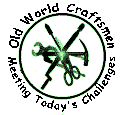Some History of Iron & Steel Sheet Roofing
Metal Roofing made its start very close to Yardley, Pa. The town of Morrisville, Pa. is named after Robert Morris, metal roof manufacturer.
Raw sheet iron is first known to have been manufactured in North America by?Robert Morris, who had a rolling mill near Trenton, New Jersey (close to Philadelphia).?Morris is more notably known as a Revolutionary War financier.?Morris produced the metal roof in this mill that was applied to his own Philadelphia mansion, having started in 1794. Architect Benjamin H. Latrobe used sheet iron to replace the roof on Princeton's "Nassau Hall," with a metal roof, which had been gutted by fire in 1802.
Tinplate iron dates back prior to the Revolution and Thomas Jefferson actually had a ?Tin? metal roof installed on "Monticello" (ca. 17701802).?This type of material was first used in Canada and it was the first use of sacrificial metal (tin) covering iron sheet in North America.?
The Tinplate industry exploded across the United States and the material was used in the production of metal embossed shingles, flat stock sheets, etc.?The old ?Tin? metal roofs can be found, still in service having been well maintained and painted regularly.?
Terne plating, the 50%lead and 50% tin coating that was used to hot dip the iron sheet to provide a superior sacrificial layer to the sheet roofing came into existence sometime in the mid-1850?s.?This newer type of metal roof material was often confused with its predecessor under the ?Tin Roof? name.
Over a hundred years ago the Follansbee Brothers Company started producing Terne Coated Steel Sheet Metal Roofing from a newly built building in West Virginia in a town that soon was to be renamed ?City of Follansbee.? Follansbee was not the only company producing the Terne Metal Roofing, however the company was the largest and provided an impetus for affordable, long lasting and architecturally appealing metal roofing.?
Centuries old metal roofing is often pulled up from atop buildings and the sheets, or coils usually have an embossed stamp of its origin and company name.?More often than not, Follansbee is the name stamp found in the layers of old roofing.?Many times the original turn-of-the-century Terne Metal Roofing remains in service, having been carefully maintained throughout its lifespan.
The old trade of the ?Tin-Knockers? has just about been lost in our post modern era.?Factories produce metal roofing sheets that are preformed with ?snap? locks and stiffener ribs and the new wave tradesmen are busy installing these modern answers to old world details.?The look is not the same, although sufficient for commercial buildings. For your home, a ?Tin Roof? is the ultimate in expression of old time architecture.?The pitter-patter of rain on the tin roof cannot be forgotten by those raised under a real ?Tin Roof.??Hand fashioning is mandatory for the nostalgic effects of the old ?Tin Roof.??Hand fashioning cannot be replicated by new age methodology.?It only takes a careful observation of the new materials vs. old metal workings to tell the very distinct difference of authentism afforded by the hand fashioned Tern Coated Steel or Terne Coated Stainless Steel Roofing.?
The new materials manufactured by Follansbee are better than ever.?The lead has been replaced by zinc.?The zinc/tin coated stainless variety allows an uncoated and interesting look as the zinc develops a soft protective patina and the anticipated life expectancy is longer than any cladding available.?
|
